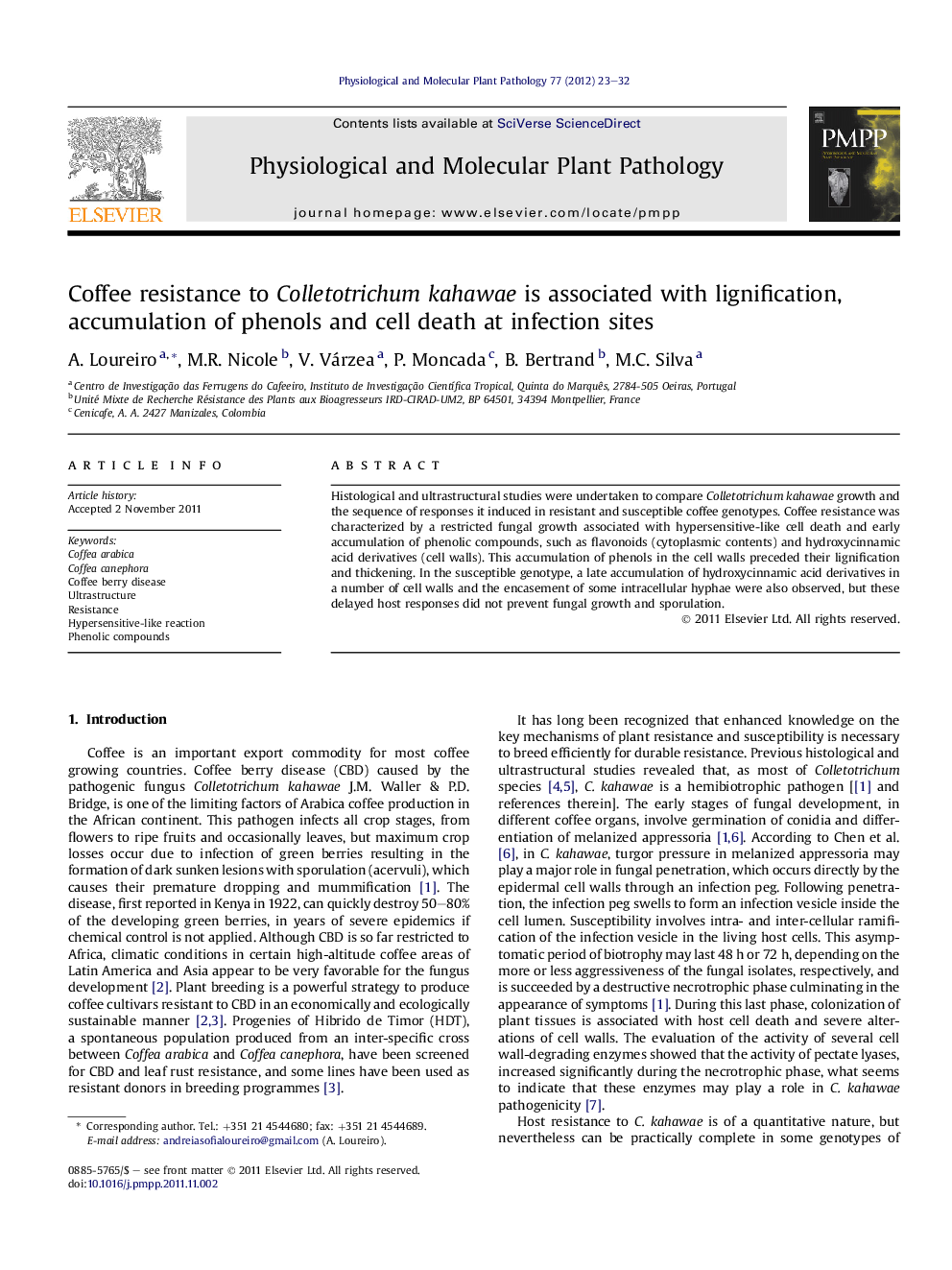| Article ID | Journal | Published Year | Pages | File Type |
|---|---|---|---|---|
| 2836470 | Physiological and Molecular Plant Pathology | 2012 | 10 Pages |
Histological and ultrastructural studies were undertaken to compare Colletotrichum kahawae growth and the sequence of responses it induced in resistant and susceptible coffee genotypes. Coffee resistance was characterized by a restricted fungal growth associated with hypersensitive-like cell death and early accumulation of phenolic compounds, such as flavonoids (cytoplasmic contents) and hydroxycinnamic acid derivatives (cell walls). This accumulation of phenols in the cell walls preceded their lignification and thickening. In the susceptible genotype, a late accumulation of hydroxycinnamic acid derivatives in a number of cell walls and the encasement of some intracellular hyphae were also observed, but these delayed host responses did not prevent fungal growth and sporulation.
► Cytological study of coffee (Coffea spp.) resistance and susceptibility to Colletotrichum kahawae. ► The fungus exhibited a hemibiotrophic strategy to infect susceptible tissues. ► Necrotrophy characterized by death of host protoplast and cell wall degradation. ► Fungal growth ceased very soon after initial penetration of resistant host cells. ► Early resistant responses corresponded to HR-like cell death and phenols deposition.
